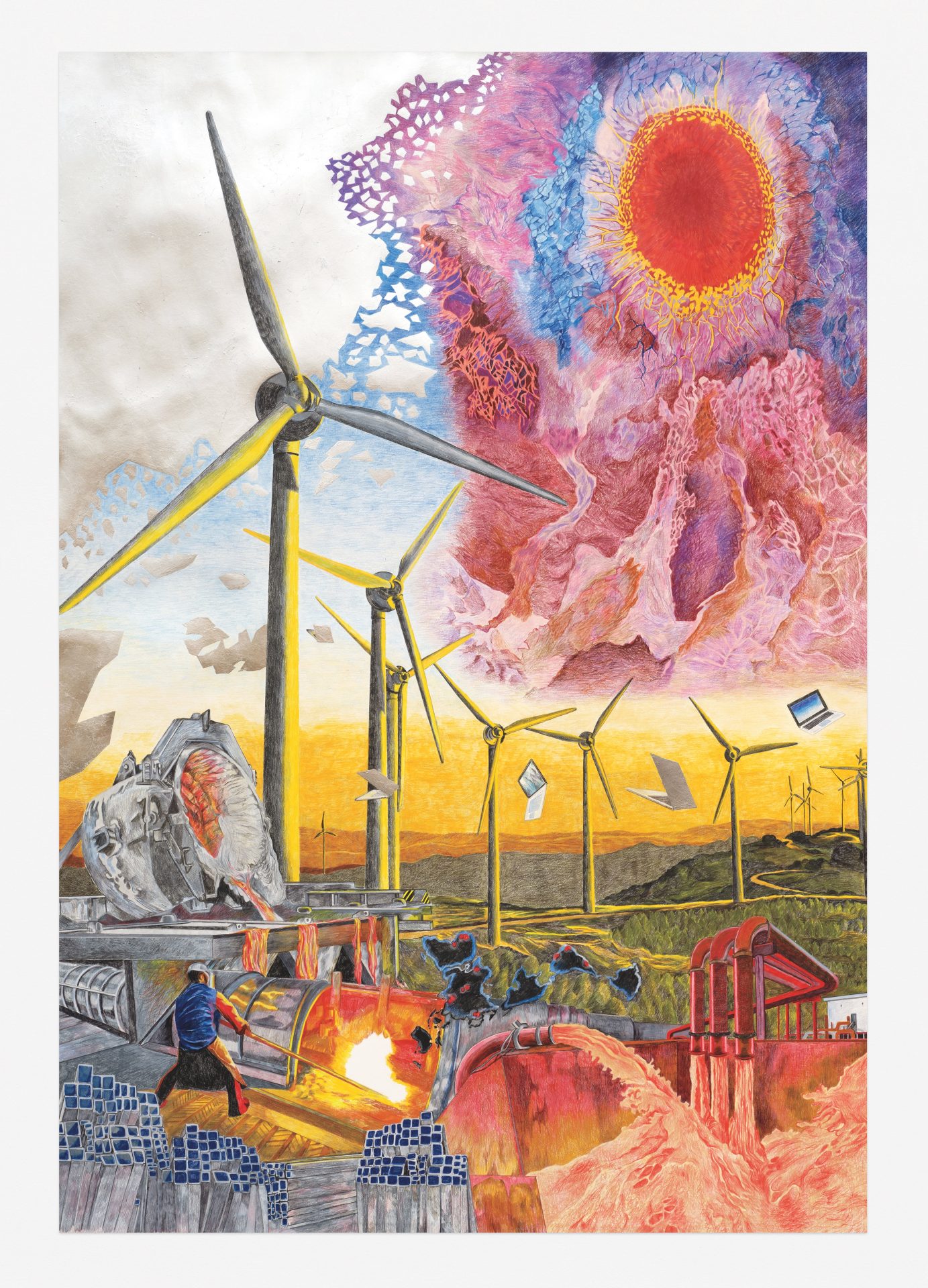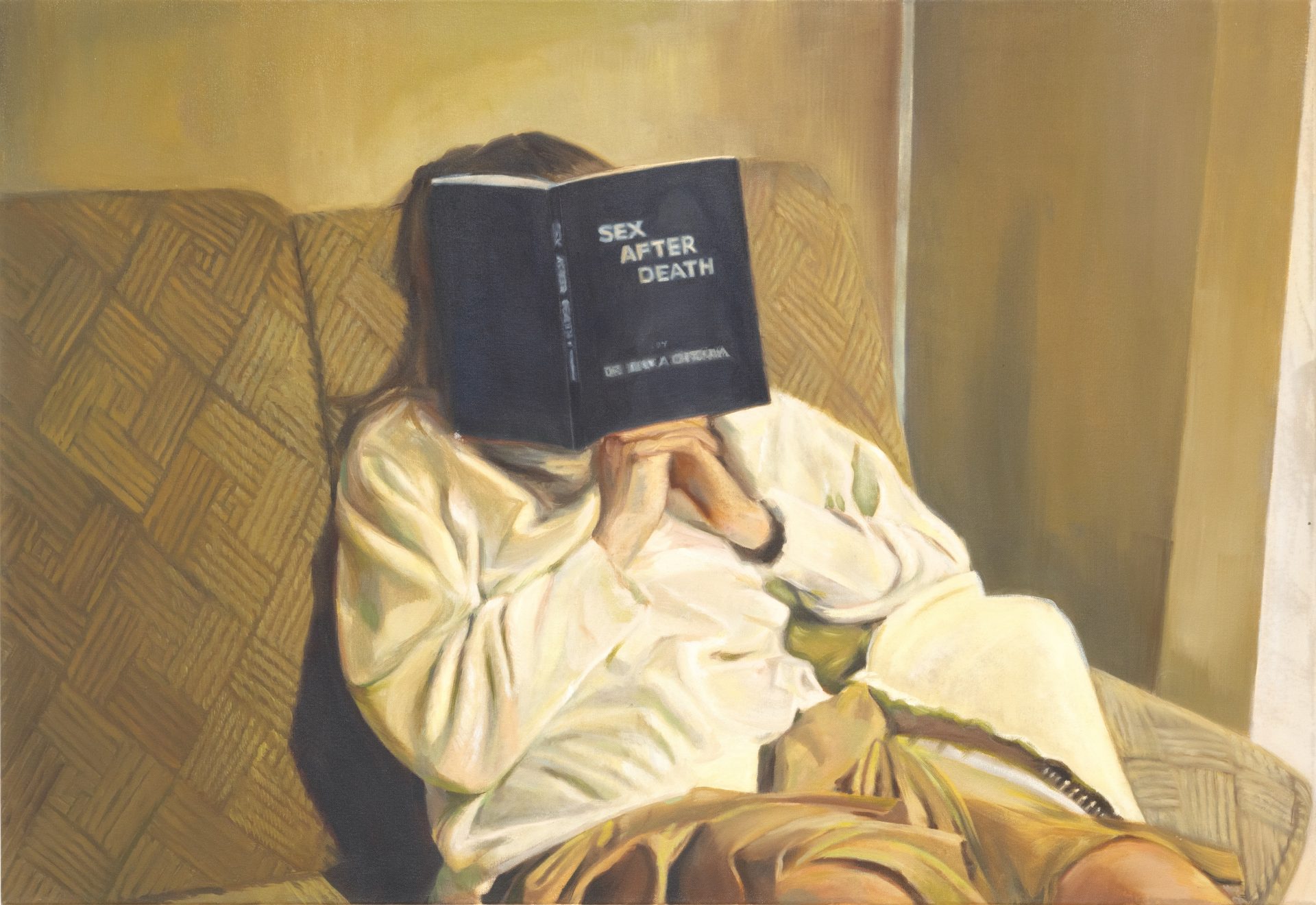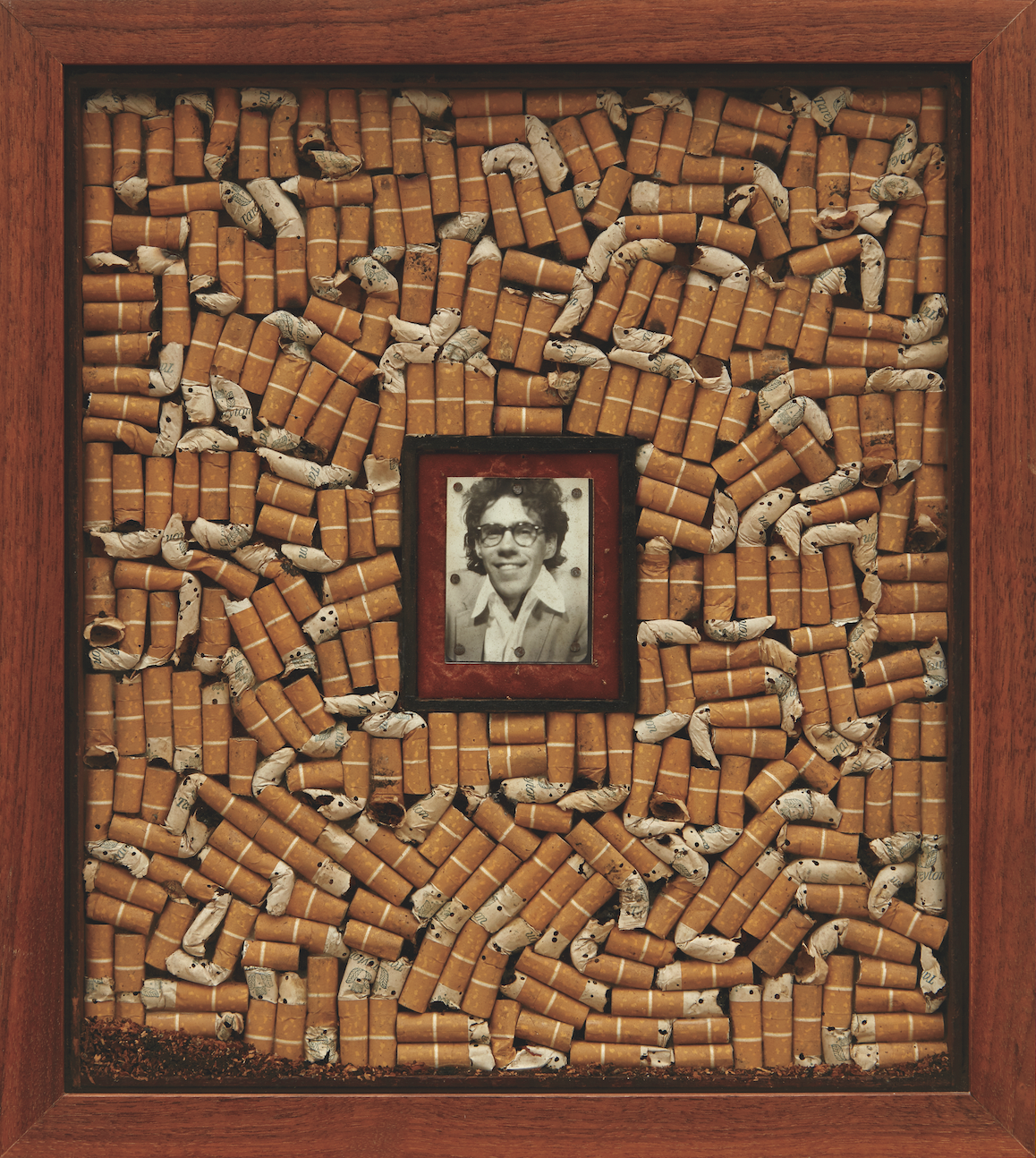
LAST SEPTEMBER, shortly before the Whitechapel Gallery mounted an exhibition of Wilhelm Sasnal’s work, Phaidon’s website posted a list of songs the Polish artist listens to while painting. Many of the tracks are ominously monotone, uniform in mood, sound, or structure—there’s no resolution, no cure for what ails. Even Elvis’s “Blue Moon,” second on Sasnal’s list, omits Rodgers and Hart’s final verse, in which a lover appears and the blue moon turns gold; instead, the song remains steadfastly lovelorn.
So does “Hollow Hills,” the Bauhaus track that inspired Sasnal to become an artist. He’d copy the band’s album covers, traces of which are visible in his early Maus paintings, with black-and-white images appropriated from Art Spiegelman’s graphic novel. Sasnal describes how Spiegelman’s book filled “one of the blank—or black—pages of Polish history,” communicating what the news—or history, that old news—had concealed. Sasnal’s stripped-down interpretations, such as Maus 4 (2001), which shows only an empty bunk bed, attempt to answer those eternal questions: What can a single painting say about the world? How does art tell the truth?
These days, the images that inspire Sasnal don’t come from comics or album covers. Instead, he finds them in the newspaper. (And then again online, as he prefers to work from printouts rather than newsprint.) The photograph of a young woman on which Sasnal based his 2011 painting Tsunami is so deliberate, so portrait-like, that it seems posed, constructed like a Jeff Wall picture. Once, art was the news; now, the news often looks like art. This evolution—or dissolution—of aesthetic boundaries informs Sasnal’s own: “I cannot,” he says, “make a distinction between what is public and what is private.” This principle is embodied in paintings such as Kacper (2010), above, in which Sasnal’s son lies in bed, staring at his cell phone: a window to the world, which turns out to look the same everywhere. Distant tsunamis, as he experiences them, are like text messages: Everything that happens, happens on-screen. And everything—family members, migrant workers, a power plant in Iran (from a photograph of same)—is rendered by Sasnal with the same smooth opacity. Whites are matte and plaster-thick, blues light and lusterless, the color of Mac desktop folders. This monochromatic glow, affectless and universal, is Sasnal’s signature shade. It’s like that line from “Space Oddity,” another Sasnal favorite: “Planet Earth is blue / And there’s nothing I can do.”






